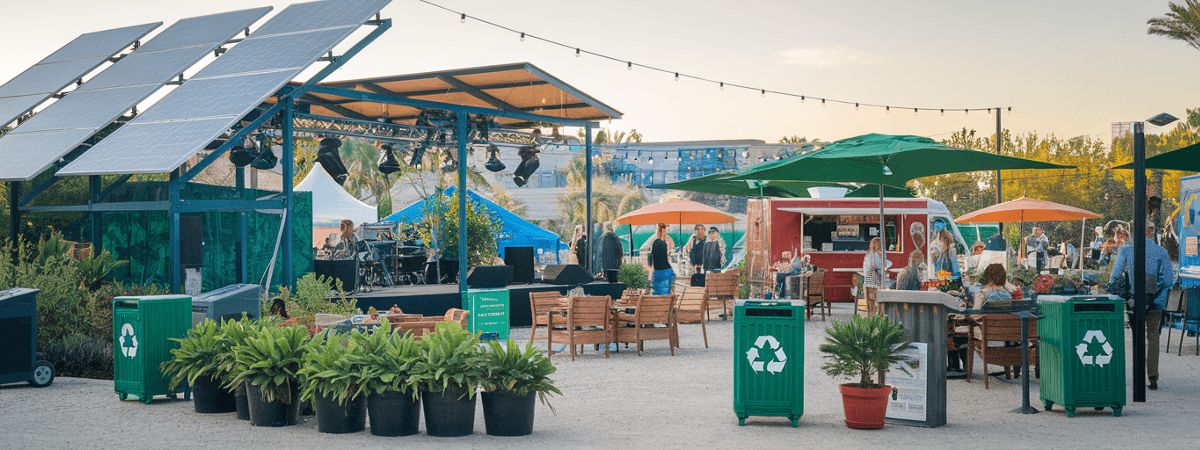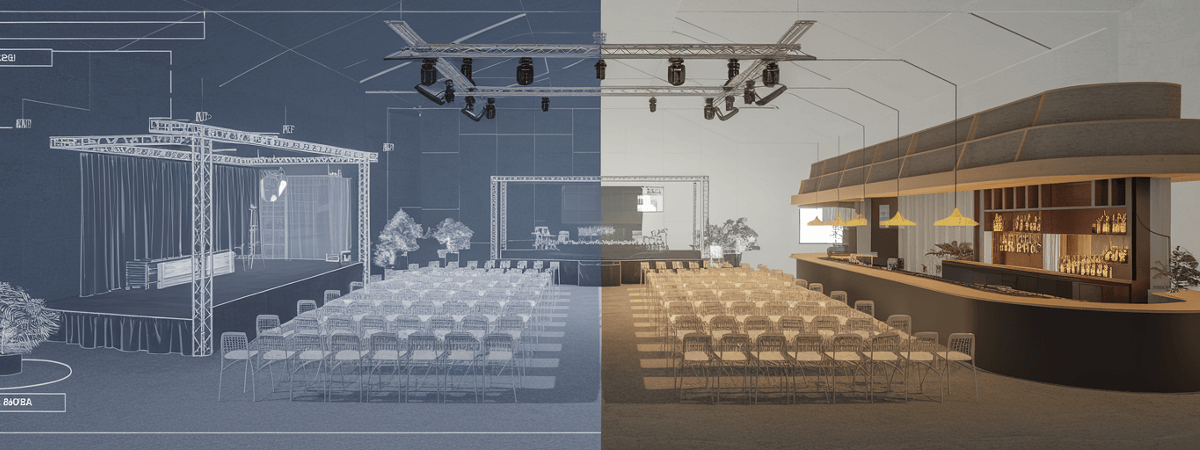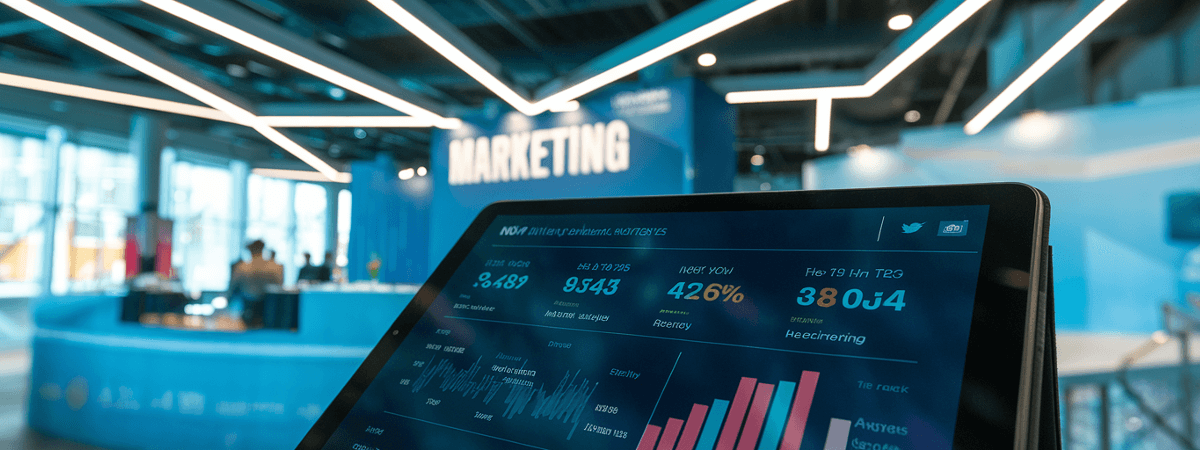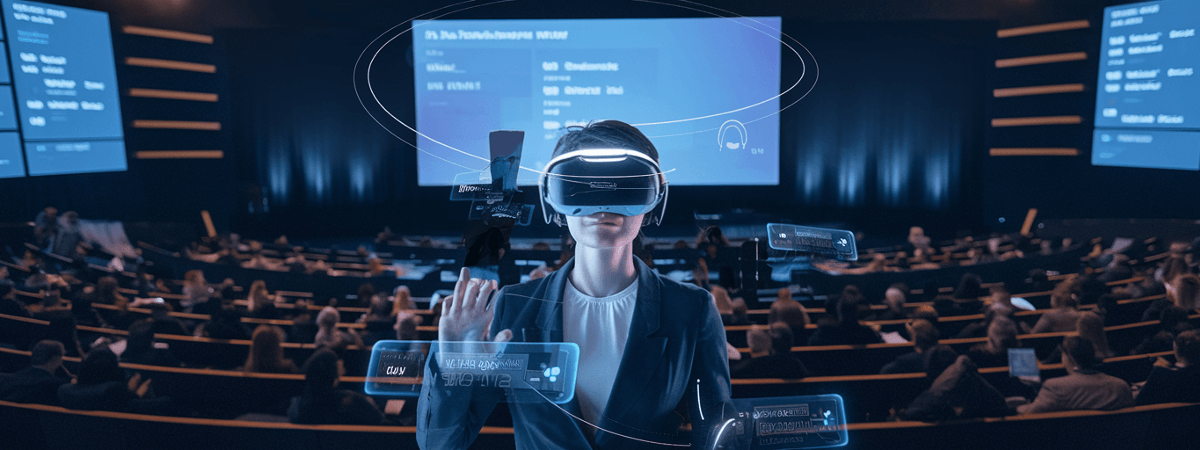Planning a large-scale event is akin to orchestrating a symphony. Its complex because you need to look at the world view at one end and an backend detailing to deliver the envisioned world view. Breaking every element which align perfectly to create a memorable experience. Here’s a look at some common challenges faced in large-scale event planning and practical solutions to tackle them.
1. Visualization and Building Expectation
Every event journey starts from Visualisation. It becomes imperative to build a clear picture of the event from layout, visual appeal, content, content creators, safety and an overall experience. Its critical to get all stake holders and team members on the same page. Venue selection, venue measurements, crowd assessments, Traffic movement, parking, Ingress and exits and so many more details need to be thought through. 3D modelling plays a critical role to convert the thought to design on paper. However a few alterations can be made once we hit the ground zero. A detailed planning goes a long way to build the right expectations from cost to experiences.
2. Managing Logistics and Coordination
Coordinating numerous logistics—venue selection, transportation, catering, and technology and sequencing of activities can become overwhelming. With multiple teams and vendors involved, miscommunications and conflicts are almost inevitable.
In our experience we have seen that assigning a project lead and Implementation of a comprehensive project management chart which can be broken down further by each department to keep track of tasks, deadlines, and responsibilities. Streamline communication, frequent updates and coordination meetings, ensures everyone is on the same page. Regular coordination meetings and escalation points can also mitigate miscommunications.
3. Budgeting and Financial Management
Even though large vents go through rigorous visualisation and design process which helps to estimate the costs, staying within budget is a constant battle in large-scale events. Unexpected costs like added branding, size changes during execution, custom duties, disturbances due to weather changes, etc can arise, and managing expenses across multiple categories requires vigilance.
We at BrandAid Events, develop a detailed budget sheet that includes contingencies for unforeseen expenses and cash flows. We also review financial reports to track spending against the budget during the regular updates and coordination meetings. Sometimes negotiating with vendors for fixed pricing can also help in managing costs.
4. Vendor Management
Coordinating with multiple vendors—caterers, decorators, audio-visual providers, logistic partners—requires careful oversight. Misalignment in expectations especially timelines or execution detailing can impact the event’s success.
Consistency in vendors partners and signing service level contract which clearly define deliverables, deadlines, and payment terms, can be a better way to avoid communication gaps and misalignments. Maintaining open lines of communication to address issues proactively is also a good practice. Over and above, creating a working checklist and timelines with the vendor ensures that all parties are aware of their roles and deadlines.
5. Attendee Experience and Engagement
It does not matter if the event has been planned and executed on the design and envisaged costs, what matters most is the Attendees engagement and experience. How does one ensure that attendees have a positive and engaging experience. The risk of disengagement or dissatisfaction grows as the scale increases.
Its imperative that the attendees arrival and check in process is seamless. This experience helps us win half the battle. Incorporating interactive elements, such as live polls, Q&A sessions, or networking opportunities, keep attendees engaged. They say, ‘The way to man’s heart is through his stomach’. So food experience too plays another important role in attendees happiness. Deploying tech solutions at strategic points like check in, information dissemination, navigation, etc can deliver great experience and reduce frustrations.
6. Risk Management and Safety
Large-scale events come with inherent risks, from health and safety concerns to potential security threats. Managing these risks effectively is crucial to ensure a safe and smooth event.
We conduct a thorough risk assessment and develop a comprehensive safety plan. Depending on the venue and size of event we engage relevant professionals and authorities to address potential threats and mitigations. Ensure you have medical personnel on standby has always worked in our favour. Safety protocols have to be communicated to all staff, volunteers and attendees. Insurance coverage is also essential to mitigate financial risks.
7. Technology Integration
Leveraging technology effectively, for guest registration, ticketing, live streaming, or interactive displays, can be daunting. Technical failures or integration issues can derail an event.
While we test and do dry runs of all technology well in advance, have backup systems in place, we also work out Plan B and Plan C. Having on-site experienced IT professionals who can troubleshoot issues is a wise expense to factor in the costs.
8. Sustainability Concerns
Events also generate loads of one-time use waste, larger the event more the waste. With growing awareness of environmental issues, integrating sustainability into large-scale events can be complex but necessary. From waste management to energy consumption, the impact of the event on the environment is scrutinized.
While implementing green practices such as minimizing single-use plastics, opting for digital tickets, and using energy-efficient lighting are the best practices, we at BrandAid have developed an app which calculates the carbon >>>>>. We partner with vendors who prioritize sustainability and provide clear guidelines on waste disposal and recycling. We have also tied up with a bag manufacturer who upcycles the banners and converts them into fashionable bags.
9. Post-Event Evaluation
Assessing the success of a large-scale event and identifying areas for improvement can be challenging but is vital for future planning.
The best practice should be to collect feedback from attendees, staff, and vendors through surveys and interviews. A lot many times it becomes difficult to collate the points effectively. Hence we conduct a debriefing session with the team to discuss what worked well and what could be improved. Event highlights, observations, casual chatter also brings in some very relevant insights which helps to refine the planning process for future events.
“Planning a large-scale event involves juggling multiple priorities and overcoming significant challenges. However, with strategic planning, effective communication, and the right tools, these challenges can be managed successfully. By staying organized and focused on both the big picture and the details, one can turn even the most ambitious event vision into a reality.We event managers are seen as magicians because of our Imagination, Innovation and Implementation. Let get going and take more challenges.“
– Vipul Mathur







